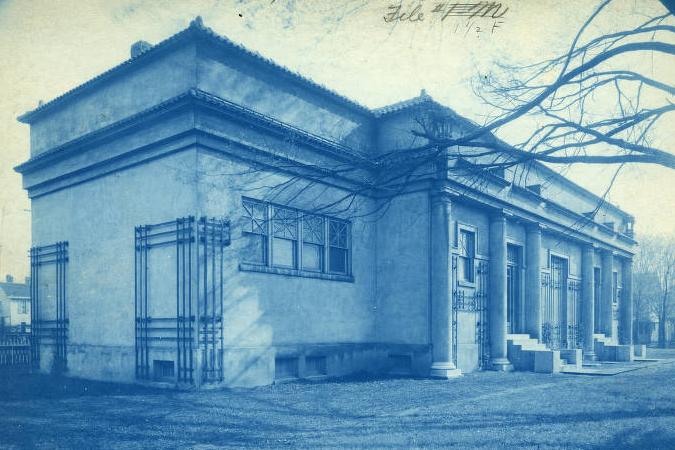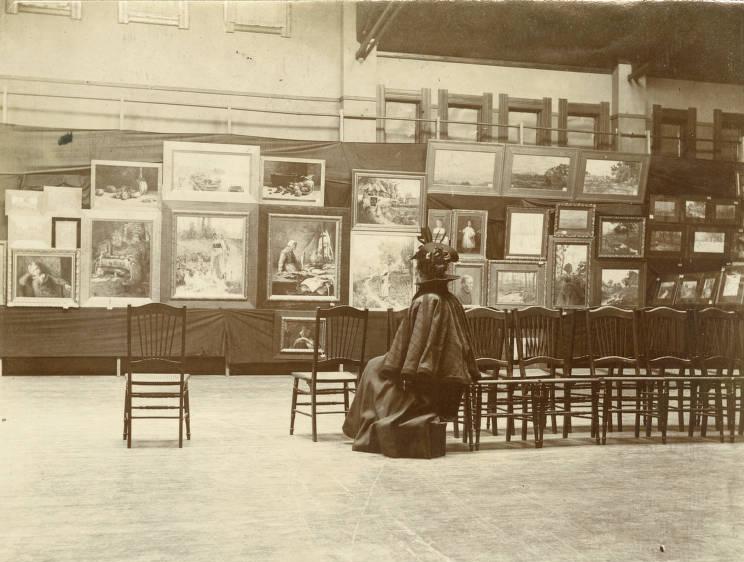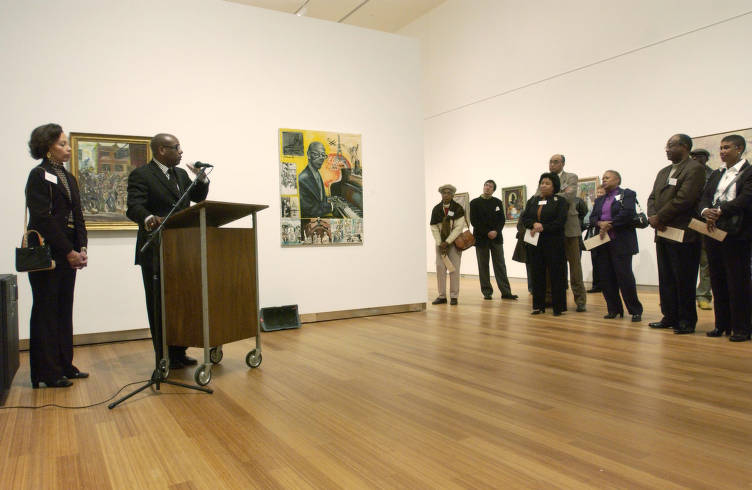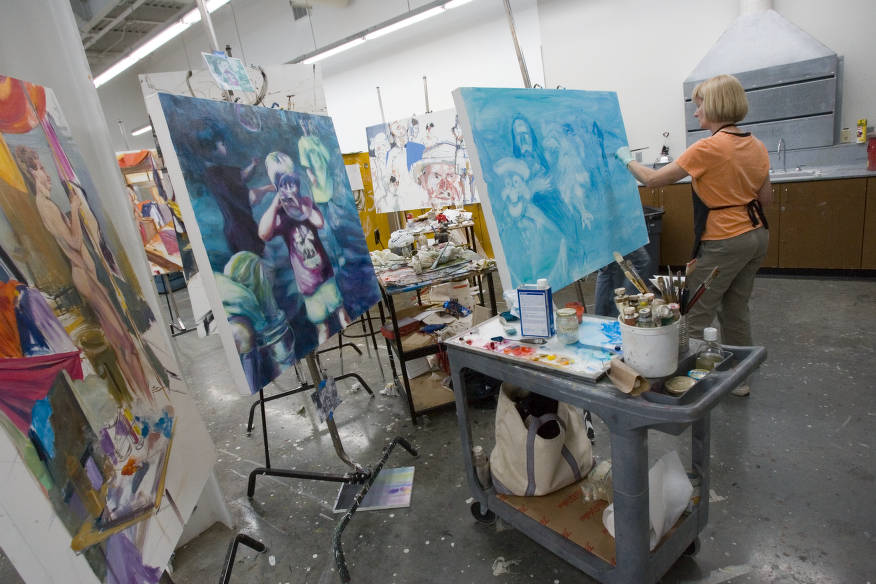The Herron School of Art and Design is Indiana’s oldest and largest art school, now part of . Through its faculty, students, alumni, facilities, and programs, Herron School of Art has defined and shaped the visual arts culture of Indianapolis for a century. The John Herron School of Art, renamed the Herron School of Art and Design, a school of Indiana University, operates a campus at 735 W. New York Street in Eskenazi Hall and provides an intensive program training individuals for careers in fine art, commercial art, and teaching. Herron’s more than 4,000 alumni are active in Indianapolis, around the United States, and abroad. The school is accredited by the National Association of Schools of Art and Design.

A bequest in 1895 by John Herron gave the fledgling Art Association of Indianapolis funds to establish an art museum and art school. Herron, whose family owned a large farm in Franklin County, Indiana, had come to Indianapolis 15 years earlier. In Indianapolis, he owned several pieces of rental property in what is now known as the neighborhood, including the 700 block of College Avenue. Herron never married and had no immediate relatives. His gift to the Art Association of Indianapolis, valued at about $250,000, came as a complete surprise to its members.
The Instruction at Herron School of Art also referred to as the John Herron Art Institute, began at the Tinker House (or Talbot Place), a modest frame structure, in January 1902. Tinker House already was recognized as a focal point of the visual arts in Indianapolis. Artist had used the house as his studio. The Tinker House was razed in 1905, and local architects designed a three-story neoclassical building to replace it. The new building opened in 1907. artists , , and were principal instructors conducting classes in painting, drawing, composition, and design. taught sculpture. By 1913 fine art, commercial art, and teacher training were the three departments of instruction. Herron offered classes for Indianapolis school children and their teachers. Study of the collections in the neighboring John Herron Art Museum reinforced studio training. designed

In the 1920s several endowments, most notably the Mary Milliken Fund, provided scholarships, and Herron conferred its first degrees in 1928. A gift underwrote the construction of a permanent art school building. This important two-story brick structure, designed in the Beaux-Arts style by noted Philadelphia architect Paul Philippe Cret, opened in 1929. The building provided increased space for studio work, lectures, and art exhibitions. Relations with Butler and Indiana universities helped train art teachers, an important school mission. taught commercial art; , fine art; and Herron alumni and Oakley Ritchie, fine art and scenic design.
The appointment of as director in 1933 gave new impetus to the school’s fine arts program. Dismissing the old faculty, including William Forsyth, Mattison appointed young, award-winning artists such as to teach a curriculum structured to produce fully trained artists. A five-year program led to a Bachelor of Fine Arts degree. From 1937 to 1940 Herron graduates won important competitions, garnering the Prix de Rome in four successive years.

Students and faculty entered local and national art exhibitions and secured government art commissions, particularly for post office murals. During World War II, many Herron men and women served in the armed forces, some as illustrators and combat artists. Enrollment burgeoned in the postwar years, leading to increases in faculty and growth of programs, particularly printmaking. Herron graduates won prestigious awards such as Guggenheim, Fulbright, and Whitney fellowships. Students and faculty showed work nationally, presentations by guest artists reinforced the curriculum, and an alumni association conducted programs benefiting instruction.
In 1958 a major bequest established the Wolcott scholarships, awarded to seniors for postgraduate study. A legacy from Caroline Fesler funded the construction of another building, Fesler Hall, designed by and opened in 1962. In 1966 the Art Association board of directors decided to separate the art school from the art museum. Negotiations led to Herron’s acquisition by Indiana University in 1967, with Mattison serving as the school’s first academic dean. It became part of IUPUI with its creation in 1969.

Joining Indiana University increased Herron’s faculty, academic, and support resources. Student enrollment rose and new faculty members developed programs in art history, ceramics, photography, and woodworking design. An enlarged sculpture foundry was equipped with new metalworking machinery. The commercial art program obtained typographic equipment and in the 1980s installed a large computer graphics laboratory.
With the art museum’s departure from the Herron campus in 1970, the school acquired the museum building and converted it to classrooms, studios, the Herron Library, and the Herron Gallery. The library (later moved to Eskenazi Hall on the IUPUI main campus) houses an important collection of art reference material. Herron Gallery, Indianapolis Center for Contemporary Art, opened in 1971. During the 1980s its annual program of contemporary art exhibitions brought to Indianapolis important new work not otherwise seen in Indiana. The gallery commissioned, and in 1989 premiered, , a work of video art examining the

In 1990 Herron received its largest legacy gift, a $200,000 scholarship bequest from Marilyn Redinger Van Sickle honoring the parents of her husband Joseph, a Herron alumnus. A successful capital campaign to raise funds for new buildings in 1999 resulted in the opening of a new ceramic arts facility one year later.
In 2003 the Herron Chronicle was published, detailing the history of the art school over the past one hundred years. In 2005, Eskenazi Hall, a new home for the Herron School of Art and Design, was completed. The 169,000-square-foot facility tripled the amount of space available to Herron students. The new building houses a 5,500-square-foot library, a 240-seat auditorium, a 4,200-square-foot space that accommodates five galleries, and several computer labs. Through its visiting artist lecture series, Saturday school for children, and summer art workshops Herron extends the reach of its programs to the Indianapolis community.
The original Herron art school’s buildings, which are in the Historic Neighborhood, serve as the home of Herron High School, a classical liberal arts charter high school.

Help improve this entry
Contribute information, offer corrections, suggest images.
You can also recommend new entries related to this topic.